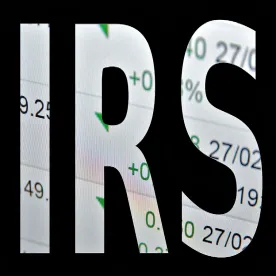Two petitions for certiorari are pending before the Supreme Court of the United States, asking the Court to resolve the question of whether a tax return filed after an assessment by the Internal Revenue Service (IRS) is a “return” for purposes of the Bankruptcy Code. The answer to this question will determine whether a bankrupt taxpayer’s tax debts can be discharged or are permanently barred from discharge—according to these petitions, the courts of appeal are divided as to the answer.
In Depth
There are presently two petitions for certiorari pending before the Supreme Court of the United States asking the Court to resolve the question of whether a tax return filed after an assessment by the Internal Revenue Service (IRS) is a “return” for purposes of the Bankruptcy Code. The answer to this question will determine whether a bankrupt taxpayer’s tax debts can be discharged or are permanently barred from discharge. According to these petitions, the courts of appeal are divided as to the answer.
The Bankruptcy Code (11 U.S.C. § 101 et seq.) generally allows a debtor to discharge unsecured debt. However, it also provides a list of non-dischargeable debts that includes three types of non-priority tax debts: (1) tax debts of a debtor who fails to file tax returns (11 U.S.C. §523(a)(1)(B)(i)); (2) tax debts of a debtor who filed fraudulent tax returns (11 U.S.C. §523(a)(1)(C)); and, (3) tax debts of a debtor who filed late tax returns if a bankruptcy petition is filed within two years after the date the late return was filed. 11 U.S.C. § 523(a)(1)(B)(ii).
Prior to 2005, the Bankruptcy Code did not define a “return” for purposes of the non-dischargeability rules. Somewhat surprisingly, the Internal Revenue Code (IRC) similarly provides no definition. The most influential case interpreting the term “return” for federal tax purposes has been Beard v. Commissioner, 82 T.C. 766 (1984). In Beard, the US Tax Court provided a four-part test to determine whether a document was sufficient to constitute a “return.” To qualify as a return, the court held that a document must: (1) provide sufficient data to calculate tax liability; (2) purport to be a return; (3) be an honest and reasonable attempt to satisfy the requirements of the tax law; and (4) be executed by the taxpayer under penalties of perjury. Beard, 82 T.C. at 777 (the “Beard Test”). The third prong of the Beard Test has divided courts and given rise to reclassifications of some late-filing taxpayers as non-filing taxpayers. Some courts, like the US Court of Appeals for the Ninth Circuit, have held that tax returns filed after the IRS has already assessed tax liability are not “returns” because the taxpayer did not make the “honest and reasonable attempt” required under Step 3 of the Beard Test. As a result, the bankrupt’s tax liability is non-dischargeable under 11 U.S.C. §523(a)(1)(B)(i) for failure to file, rather than qualifying for the waiting period for late filing under 11 U.S.C. §523(a)(1)(B)(ii). Other circuits, like the US Court of Appeals for the Eighth Circuit, have held that the “honest and reasonable attempt” prong of the Beard Test requires only that a taxpayer attempt to complete the tax return and have treated tax returns filed after the IRS has assessed tax liability as “returns” for purposes of the Bankruptcy Code. The Eighth Circuit’s reasoning thus allows a bankrupt taxpayer to file a “return” after the IRS has assessed tax and still discharge his or her tax debt after the two-year waiting period under 11 U.S.C. §523(a)(1)(B)(ii).
In 2005, Congress amended 11 U.S.C. § 523(a) to provide that a “‘[tax] return’ means a return that satisfies the requirements of applicable non-bankruptcy law.” However, as noted above, the IRC provides no definition of “return.” Some courts have since held that this amendment had no effect on the analysis set forth in Beard, while others have held that the amendment neutralizes the Beard analysis, creating a current circuit split. At present there appear to be three distinguishable approaches to determining the dischargeability of a late-filing bankrupt taxpayer’s tax debt. The Eighth Circuit treats post-assessment returns as late returns under the Beard analysis, which only postpones dischargeability by two years. The Ninth, Fourth, Seventh, and Eleventh Circuits treat post-assessment returns as non-returns under the Beard analysis, thereby rendering the relevant tax debt non-dischargeable. Finally, the First, Fifth, and Tenth Circuits treat all late and post-assessment returns as non-returns under the amended 11 U.S.C. § 523(a), therefore triggering the dischargeability bar.
Martin Smith did not timely file his 2001 Form 1040, and the IRS prepared a Substitute for Return (SFR) pursuant to IRC section 6020(b). In March 2006, the IRS mailed Smith a notice of deficiency asserting a deficiency in his 2001 taxes. Smith did not challenge the deficiency asserted in the notice, and the IRS assessed the full amount. In May 2009, Smith filed a Form 1040 for his 2001 tax year, noting that this was the “original return to replace the SFR.” On his May 2009 return, Smith reported more income than on the IRS’s SFR, and, accordingly, a higher tax liability than that assessed by the IRS. The IRS added the additional tax liability reported by Smith to the assessment for 2001. On December 22, 2011, Smith declared bankruptcy and sought to discharge his 2001 tax debt. The IRS contended that taxes assessed prior to Smith’s 2009 filing for the 2001 tax year were non-dischargeable taxes for which no return had been filed.
The Bankruptcy Court disagreed with the IRS and ruled in Smith’s favor, holding the post-assessment Form 1040 a late “return” under 11 U.S.C. §523(a)(1)(B)(ii) and not a non-return under 11 U.S.C. §523(a)(1)(B)(i). The IRS appealed, and the district court reversed, holding that Smith’s 2001 tax debt was not dischargeable. Smith appealed to the Ninth Circuit, and, on July 14, 2016, the Ninth Circuit found that Smith’s post-assessment tax return was not an “honest and reasonable attempt” to comply with the tax law, and therefore Smith had not filed a “return” for purposes of 11 U.S.C. §523(a)(1)(B)(i). Smith v. Internal Revenue Service, 828 F.3d 1094 (9th Cir. 2016).
In a similar case, the IRS solicited tax returns from Christopher Justice for tax years 2001–2006. Justice hand-delivered his Forms 1040 for SFR years of 2000, 2001, 2002 and 2003 as well as for 2004, 2005 and 2006, three non-SFR years, on October 22, 2007. The returns for the SFR tax years were not processed, while the returns for the non-SFR years were processed and reflected a filing date of October 22, 2007. Two years later, the returns for the SFR tax years were again solicited by the IRS. Justice resubmitted the signed copies of the Forms 1040 for 2000, 2001, 2002 and 2003 on September 1, 2009.
On July 22, 2011 Justice filed a Voluntary Petition under Chapter 7 of the Bankruptcy Code and received a Discharge of Debtor under 11 U.S.C. § 727 on November 4, 2011. On January 10, 2012, Justice sought determination that the tax liabilities for the 2000, 2001, 2002 and 2003 tax years were not excepted from the discharge. The Bankruptcy Court held for the United States and on appeal the district court affirmed. Justice appealed, and on March 30, 2016, the Eleventh Circuit found that Justice had failed to establish that he had made an “honest and reasonable attempt” to comply with the tax law. The Eleventh Circuit therefore held that Justice’s tax debt for the SFR years could not be discharged by the bankruptcy.
Both Smith and Justice have filed petitions for certiorari with the Supreme Court (Docket No. 16-497 and No. 16-786, respectively). Both petitions are based on a division among the circuits regarding whether a tax return filed after an assessment by the IRS is a “return” for purposes of the Bankruptcy Code. This division, the petitioners argue, creates uncertainty and causes dissimilar treatment of bankrupt taxpayers, making this a paradigm case for the Supreme Court to address. Smith’s petition argues that a filed and accepted late tax return is in fact a return “[t]hat is ‘[l]ate’”. Justice’s petition argues that the third prong in the Beard Test should focus on the return itself and not the reasons for not filing, specifically that the hanging paragraph in 11 U.S.C. §523 provides that the non-filing debtors cannot rely on an IRC section 6020(b) assessment by the IRS for purposes of starting the two year waiting period under 11 U.S.C. §523(a)(1)(B)(ii).
In support of Smith’s petition for certiorari with the Supreme Court, the National Consumer Bankruptcy Rights Center (the NCBRC) and National Association of Consumer Bankruptcy Attorneys (the NACBA) filed a brief as amici curiae in support of certiorari. The NCBRC is an organization that works to preserve bankruptcy rights of consumer debtors and protect the integrity of the bankruptcy system. The NACBA is an organization of consumer bankruptcy attorneys throughout the country that works to educate the bankruptcy bar and the community at large. In their amicus brief, the NCBRC and NACBA noted the well-developed conflict among the circuits. Specifically, the brief cited the three-way split in the judicial interpretation of late-filed tax returns. The NCBRC and NACBA highlighted the discrepancy in the treatment of similarly situated debtor taxpayers.
On January 13, 2017, the IRS filed its brief in opposition of certiorari in Smith. The IRS argues that there is no conflict among the circuits as to whether a tax filing made after the IRS prepares an SFR qualifies as a return. Specifically, the IRS concludes that the circuit courts’ differing approaches to interpreting 11 U.S.C. §523(a)(1) does not in itself provide a basis for further review. In its brief, the IRS notes that while some courts apply the Beard Test and some circuits have found that deadlines are applicable filing requirements, the circuits have come to the same conclusion that post-assessment filings were not “returns” under 11 U.S.C. §523(a)(1).
On February 22, 2017, the IRS filed its brief in opposition to certiorari in Justice. Similar to its opposition in Smith, the IRS argues that, although the circuits have differing approaches to analyzing dischareability under 11 U.S.C. §523(a)(1), every court of appeals has addressed whether a tax filing made after the IRS prepares an SFR qualifies as a return and has reached the same result: a debtor cannot make a tax debt dischargeable by filing a Form 1040 after the IRS has already assessed the debtor for the given year because a post-assessment filing is not a “return”.
If the Supreme Court grants certiorari, the circuit split alleged by the petitioners and the amici curiae would be resolved, as well as the uncertainty and potential dissimilar treatment of bankrupt taxpayers that Smith, Justice, and the amici argue exists today.




 />i
/>i

